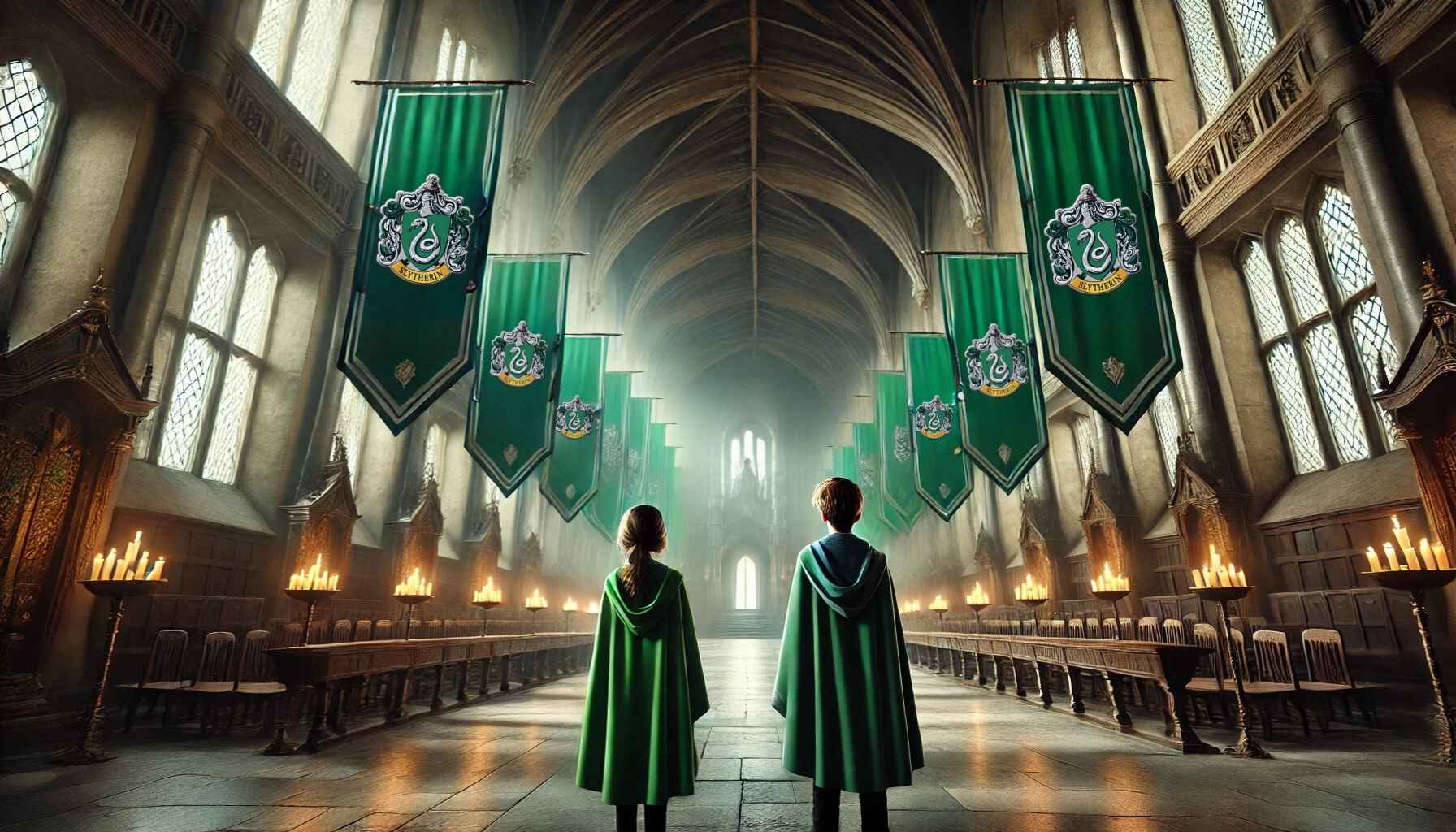Slytherin House Values: ambition, greatness and resourcefulness
Introduction to Slytherin House
Slytherin House Values have long captivated the imaginations of both students and the wider wizarding world. Known for its storied legacy at Hogwarts School of Witchcraft and Wizardry, Slytherin has earned a rather complex reputation. The house, often associated with ambition and cunning, is one of the four founding houses of Hogwarts, each contributing to the rich tapestry of magical education and culture.
Salazar Slytherin, one of the esteemed Founders of Hogwarts, envisioned a house that would nurture witches and wizards who were ambitious and resourceful. His vision was rooted in the belief that these traits would lead individuals to achieve greatness. Slytherin’s legacy is one of both respect and controversy, known for its emphasis on pure-blood heritage and a storied history that includes some of the most notable witches and wizards.
The serpent is the key symbol of Slytherin House, representing qualities such as cunning, rebirth, and transformation. The house colors of green and silver further emphasize the connection to water and moonlight, reflecting adaptability and brilliance. These symbols are proudly displayed by members of the house and are integral to the identity of Slytherin.
There are common misconceptions about Slytherin House that have persisted over the years. Many tend to associate the house solely with dark magic and nefarious figures. However, it is crucial to understand that Slytherin values ambition, resourcefulness, and a strong sense of leadership, which are positive traits when harnessed correctly. Not every member of Slytherin turns to the dark arts, and many have gone on to do great things in their fields.
Ambition in Slytherin House
Ambition is a defining characteristic of Slytherin House and one of its most valued traits. In Slytherin, ambition is seen not as a mere desire but as a drive to achieve one’s highest potential and goals. It means setting sights on greatness and striving relentlessly to reach it. Ambition is not just about personal success, but also about contributing to the wizarding world in meaningful ways.
Many notable Slytherin characters have exemplified this ambition. Severus Snape, for instance, showcased immense dedication to his complex goals, despite facing numerous challenges. Draco Malfoy, another prominent Slytherin, displayed his ambition through his leadership and growth throughout his journey at Hogwarts.
Ambition shapes a Slytherin’s journey at Hogwarts in various ways. It encourages them to take initiative, seize opportunities, and sometimes, take risks that others might shy away from. This drive can lead to significant accomplishments, whether in academics, Quidditch, or other areas of magical life.
Encouraging healthy ambition in young witches and wizards is vital. Parents and educators can nurture this trait by setting positive examples, providing guidance, and promoting a balanced approach to ambition that considers ethics and empathy. This can help ensure that ambition does not lead to harmful or unethical decisions.
Greatness: The Slytherin Pursuit
The concept of greatness is deeply ingrained in Slytherin culture. It is not merely about achieving success but reaching a level of excellence that is acknowledged and respected by peers and the broader wizarding community. Greatness in Slytherin is about making one’s mark and leaving a legacy.
Throughout history, many Slytherins have achieved greatness. Merlin, one of the most famous wizards of all time, was a Slytherin. Known for his wisdom and powerful magic, Merlin’s legacy continues to inspire witches and wizards worldwide. More contemporary figures, like the ambitious Horace Slughorn, have also demonstrated how Slytherins can achieve greatness in their fields.
Balancing greatness with ethical considerations is crucial. Achieving greatness should not come at the expense of integrity or moral values. Slytherins are encouraged to consider the broader impact of their actions and to strive for greatness that is both admirable and ethical.
Inspiring future generations of Slytherins to strive for greatness involves providing them with role models who embody the best values of the house. By celebrating stories of Slytherins who have made positive contributions to the wizarding world, young witches and wizards can be motivated to pursue their own paths to greatness.
Resourcefulness: A Key Slytherin Trait
Resourcefulness is a key trait that sets Slytherins apart from other houses. In a magical context, resourcefulness involves the ability to adapt, make the most of available resources, and find innovative solutions to challenges. It requires a creative and strategic mindset that is highly valued in the wizarding world.
There are numerous examples of resourcefulness from Slytherin students and alumni. Severus Snape’s ability to create new spells and potions, as well as his adeptness in espionage, showcases the power of resourcefulness. Similarly, Phineas Nigellus Black, a former headmaster of Hogwarts, was known for his cleverness and use of resources to manage the school effectively.
The role of resourcefulness in problem-solving and innovation is significant. It encourages Slytherins to approach problems from different angles, think outside the box, and come up with creative solutions. This trait is particularly valuable in fields such as magical research, potion-making, and defense against the dark arts.
Developing resourcefulness skills at Hogwarts involves engaging in activities that challenge students to think critically and learn from their experiences. Classes in potion-making, transfiguration, and magical creatures often provide opportunities for students to practice and hone their resourcefulness.
The Modern Slytherin: Breaking Stereotypes
Over time, Slytherin values have evolved while still maintaining their core principles. The modern Slytherin is more open-minded and inclusive, reflecting changes in the wizarding world. While ambition, resourcefulness, and a drive for greatness remain key aspects, there is a growing emphasis on ethical behavior and collaboration.
Promoting acceptance and unity among Hogwarts houses is essential for breaking down stereotypes. Slytherins today are encouraged to work alongside students from other houses, fostering a spirit of cooperation and understanding. Inter-house activities and shared spaces at Hogwarts are great ways to build relationships and mutual respect.
Celebrating diversity within Slytherin House is important. The house has always been home to a wide range of personalities and talents, each contributing in their unique ways. By embracing this diversity, Slytherin can continue to thrive and grow as a community.
Encouraging a positive Slytherin image in the wizarding world is crucial for dispelling outdated myths. Highlighting the successes and positive contributions of Slytherins helps shift perceptions and showcases the house as one that values integrity, ambition, and achievement. This positive image can inspire new generations to proudly wear the green and silver.
















